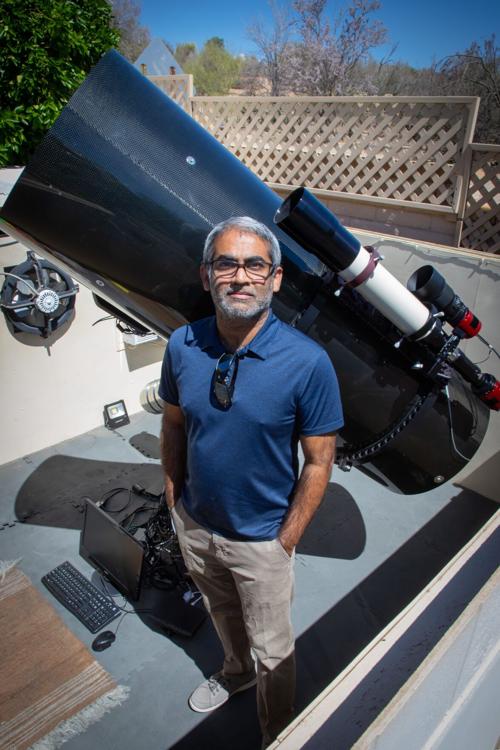A professor and his students from the University of Arizona’s Lunar and Planetary Lab have joined the worldwide effort to track a Chinese rocket that’s due to crash down somewhere on Earth, probably this weekend.
Using a special astrophotography camera set up in his backyard, UA associate professor Vishnu Reddy captured photos and video of the tumbling rocket stage as it streaked over Tucson at about 5 a.m. Friday.
He also spotted it with his naked eye.
“It’s tumbling so fast, I could see it blinking in and out of view,” he said. “It was just unreal.”
Astronomers around the world are closely monitoring the giant metal cylinder to try to figure out when and where it will land.
The debris is left over from a 17-story-tall Long March 5B rocket that lifted off from Southern China on April 29, carrying the core module for China’s newest space station.
Reddy said the remaining section of the rocket’s main stage is 33 feet long and 16 feet wide and weighs about 400,000 pounds. It’s somersaulting end over end along its long axis every few seconds.
As of Friday morning, it was traveling at 18,000 mph and skipping along the top of the atmosphere at a distance of 96 miles, Reddy said. “These numbers are changing by the minute.”
The best estimate early Friday was that the cylinder would re-enter the atmosphere and crash sometime between 4 p.m. and 7 p.m. local time Saturday, give or take 9 hours or so, he said with a laugh.
The projections should get much more accurate the closer we get to re-entry time. “By breakfast Saturday morning, we’ll know when and where it’s coming down precisely,” Reddy predicted.
Since about 70% of the planet is covered in water, there is a high probability that it will crash harmlessly in the ocean. But if it hits a populated area, it could damage buildings and even kill people, said Reddy, who helps the U.S. Air Force with space surveillance when he isn’t teaching.
The likelihood that the rocket remnants will rain down on Tucson — or, say, your house — is so remote that it’s not even worth thinking about, he said. “You don’t have to worry that it’s going to hit you. There are other things (in the world) to be worried about.”
Reddy and two of his students are tracking it mostly as an educational exercise — and to get in on the fun. “Any time you have an event like this, it’s useful for getting your students engaged,” he said.
Tucson residents were expected to get at least one more chance to see the rocket section before its uncontrolled re-entry sometime this weekend.
Reddy said it was slated to cross low in the sky at 4:34 a.m. Saturday, when it would be visible to the north-northeast for about a minute before disappearing over the horizon.





